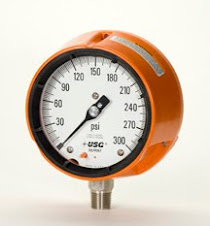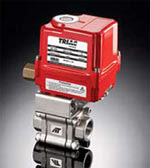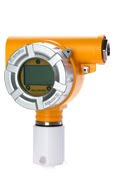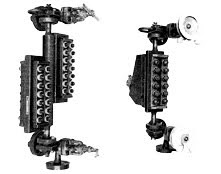Open Channel Flowmeters
How Open Channel Flowmeters Work
Open channel flowmeters measure the flow of liquids that are open to the atmosphere at some point in the measurement system. The liquid may be entirely open to the atmosphere, or may be contained within a closed pipe that is not full of liquid and only open to the atmosphere at the flowmeter itself.
Open channel flowmeters generally consist of a primary device, transducer, and transmitter. The wetted primary device restricts the liquid flow stream. Under flowing conditions, this restriction causes a rise in liquid level at a location either upstream or within the flowmeter. When the flow increases, the level rises higher. A transducer is mounted on or near the primary device to sense the level. The electronic transmitter uses the signal from the transducer to measure the level to determine liquid flow.
Different geometries are used for open channel measurement, including flumes that make the channel narrower, weirs that force the liquid over a dam-like obstruction, and nozzles that restrict the flow of liquid before it freefalls from the nozzle.
How to Use Open Channel Flowmeters
Open channel flowmeters measure the flow of liquids that can be safely exposed to the atmosphere, such as water and sewage. Applications for these flowmeters are primarily found in the water and wastewater industries to measure water and sewage flows. However, there are usually a few applications for open channel flowmeters to measure effluent flows in the mining, mineral processing, power, pulp and paper, petroleum, chemical, and petrochemical industries. Due to the limited applicability of open channel flowmeters, materials of construction are typically limited to those that target these applications. Sizes range from a few inches to tens of feet. It is generally less expensive to purchase smaller open channel flowmeters and field construct larger ones (typically with concrete).
Application Cautions for Open Channel Flowmeters
Open channel flowmeters pose potential environmental and safety issues because the liquid is exposed to the environment. Also, dirt can accumulate and plug the sensing systems of some designs. Dirt can also adversely affect the accuracy of these flowmeters.
A straight run of channel is usually installed upstream of the primary device to condition the flow to be free of jetting and eddies. The channel should properly mate with the flowmeter and not create any abrupt dimensional changes at the transition. Be careful when designing the channel downstream of the flowmeter because some open channel flowmeters require free-fall conditions, whereas others require a downstream channel.
When installing the primary device, be sure to level the flowmeter per manufacturer specification in all planes. Make sure that the transducer is mounted in the correct location because failure to do so can cause erroneous flow measurements.
Tuesday, June 22, 2010
Subscribe to:
Post Comments (Atom)





















No comments:
Post a Comment